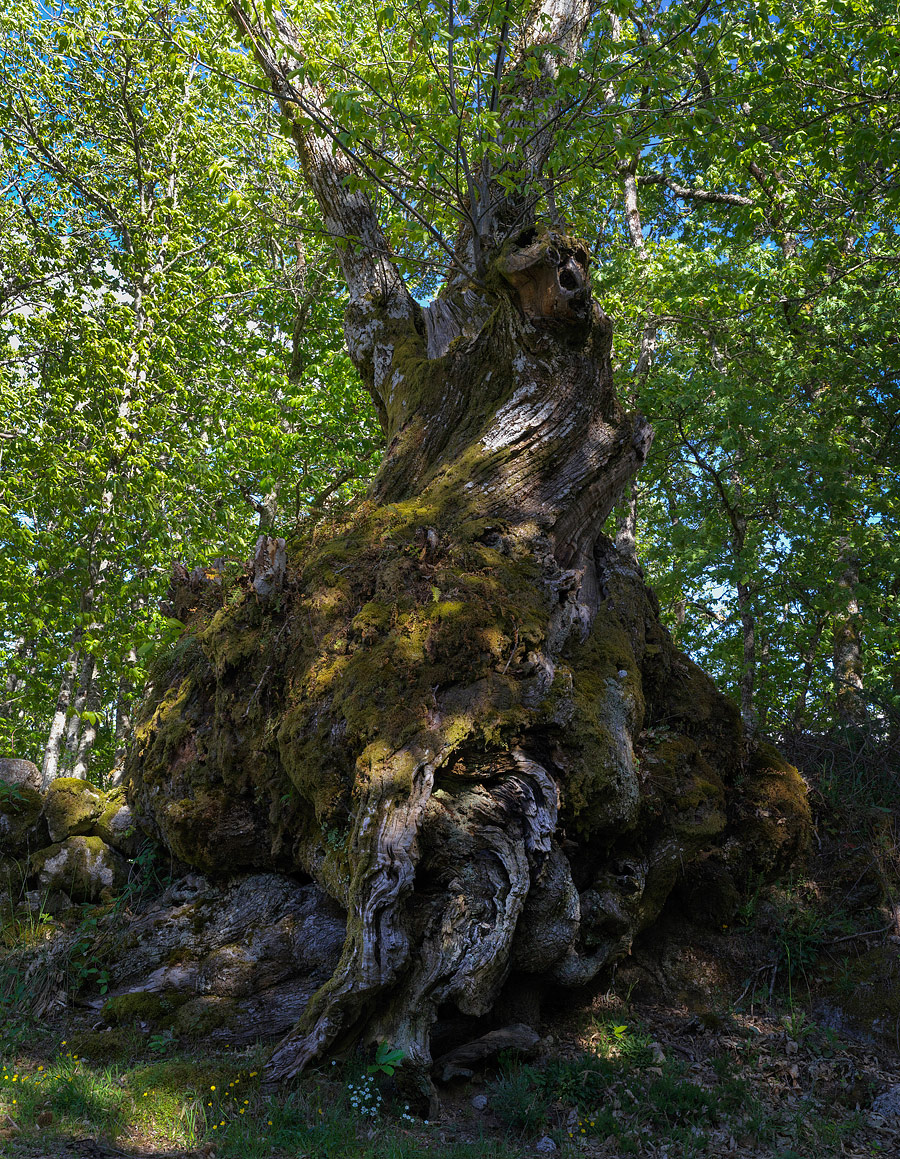The chestnut tree, a species native to the region between the Balkans and Iran, has been cultivated in Europe for many centuries, probably millennia, where it has become naturalized and grows spontaneously. It occurs in a large part of Portugal, except in the central and southern coastal regions. The plant can be affected by various diseases caused by fungi but generally has great longevity, being able to live for hundreds of years.
It is a deciduous species, losing its leaves in winter and forming new ones in spring. While walking through Trás-os-Montes in May this year, with the chestnut trees full of young, light green leaves, I was surprised to see this chestnut tree, certainly dozens of years old, full of life, with young leaves, which will certainly produce chestnuts in autumn.
The base of the trunk was huge and covered with mosses and lichens. The tree had many branches that dried up and died but formed new ones, now full of leaves – an extraordinary tribute to life and a wonderful object to photograph.
Benefits of VIP membership:
• Download all new issues of Landscape Photography Magazine
• Download all back issues of Landscape Photography Magazine
• Download all new issues of Wild Planet Photo Magazine
• Download all back issues of Wild Planet Photo Magazine
• Download premium eBooks worth £19.45.
• Create your Personal Portfolio Page – click here to see sample
• Your pictures stay attached to your Personal Portfolio Page forever
• Your published pictures are shared with over 300,000 members and followers
• Your shared pictures are tagged on Instagram
• Submission Priority – your submission goes to the front of the queue
• Fast Support – we aim to reply within 12 hours
 Create your Personal Portfolio Page and let us share your published pictures with over 300,000 members and followers.
Create your Personal Portfolio Page and let us share your published pictures with over 300,000 members and followers.
Dimitri Vasileiou • Editor


